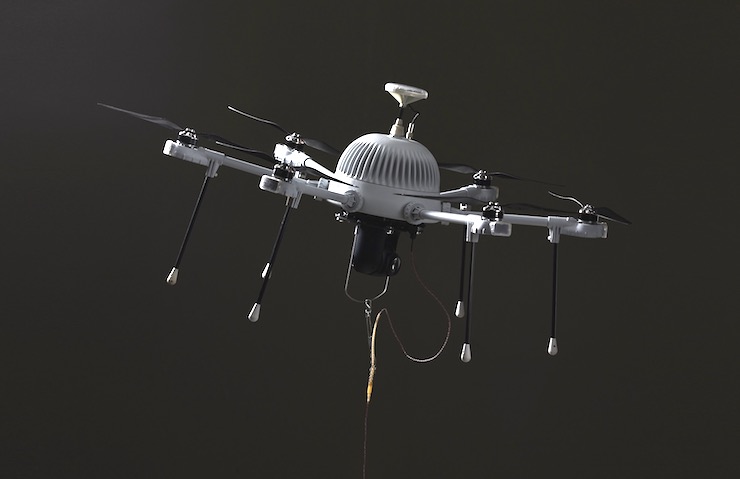
Drones have proven themselves as valuable tools in many different fields. Whether they are being used by a civilian hobbyist, a commercial industry, or even a military fraction they are bringing ease and advancements to all involved. However, if you were to ask any drone operator what the one major draw back in drone technology is, they would undoubtedly reply battery issues. A drone’s size has to be proportionate to it’s battery size. The bigger the drone, the bigger the battery. The smaller the drone, the smaller the battery. This limits a drone’s flight time greatly. But one company thinks they have found a solution to this across the board problem.
As of right the average personal or commercial drone battery provides a flight time of around 20-40 minutes, with a charging process that can take several hours to complete. Aria Insights, previously called CyPhy Works, claims that their drones can stay airborne for up to days at a time. How do they manage this, by removing one of the guiding principles of what a drone is, free flight. Rather than having a drone that can be remotely or autonomously flown, they have built a drone platform that is based off of a tether system. In other words, the drones remain anchored to the ground by a cable.
Based out of Danvers, MA, Aria Insights has designed a drone called PARC (Persistent Aerial Reconnaissance and Communications). According the their website, the six rotor drone is capable of “Providing stable, secure, autonomous flight, PARC allows you to focus on the business mission, rather than on controlling the UAV.” It is a drone designed for commercial use that allows it’s users to just set it up and let it do it’s thing, with some guidance of course. The drone is tethered by an extremely durable cable that is about the width of a headphone cord. It is able to keep PARC steady in the air through wind, rain, and even air debris. It can reach heights of 400ft, the maximum allowed by the FAA. The patented microfilament tether provides a continuous charge to the drone as well as a secured communication line. Because there is no need for extra or bulky batteries, PARC is easily portable and assembled. And, because it is anchored to the ground, controlling it’s flight is super simple.
But how is this applicable when one of the main points of using a drone is how it can fly unencumbered? True, there are many situations when a free flying drone will be the better option, but often times having one kept at a stationary point can be just as beneficial. One way that PARC is helping is by being able to provide an instant cell tower in regions without service. Nearly 5 billion people use cellular devices. If cell service is eliminated from a natural disaster, PARC can be used to reconnect the service within minutes. It can even be set up in remote areas where traditional cell towers have not yet been erected.
Another way PARC can be used is in situations where large groups of people are involved. The FAA does not allow drones to be flown over groups of people. However, security and public safety personnel can greatly benefit from having an eye in the sky to monitor such events like music festivals, sports games, or even protests. Because PARC is a tethered system, it can be safely flown over audiences within the safety guidelines of the FAA. PARC has also been found to be helpful for military applications, as well as the inspection and monitoring of dangerous work sites like high rise construction, and oil and gas infrastructures.
So, maybe tethering a drone to the ground takes away some of the “droneness” of a drone. But with the PARC tether system drones and their operators are being given a lot of new freedoms. They no longer have to worry about the limits of batteries. Their “flight paths” easily adhere to all FAA regulations. They provide a secure communication between the drone and it’s operator. And they are simple to deploy and use.
|